If you missed Part One of this three-part series about how this Californian came to be living in England, and why I continually return to the topic of home, here is a link to that first post.
Arriving
From my journal September 2010:
I’m sitting in Pete’s sister Caroline’s house now, having arrived at Heathrow this morning, and have napped all afternoon. I can’t wait for Pete to get here.
It feels deliciously familiar and comfortable arriving here in London. Even now I feel so very calm about what I am doing. It feels so right. I just have to wonder if there will be a moment of panic at some point when I think I am crazy, or if it will continue to feel just right.
Pete eventually arrived and the next day we drove to Plymouth, our new home, about a 4 hour drive from the outskirts of London. The first hour was consistent greenery-lined motorway with nothing much remarkable except periodic off ramps for interesting sounding places like Bagshot, Fleet, Hook, Mapledurwell, and Farleigh Wallop. After about an hour we exited “TO THE WEST” as the sign says, and we were on the A303 that would take us near to Plymouth, when the roads would get increasingly smaller until we eventually reached the infamous Devon lanes1.
The A303 is the main non-motorway route between the centre of Southern England, and THE WEST. It is also how you get to Stonehenge, so there is that. And sure enough, as we drove by, I could see the Henges. Really. There is nothing separating the roadway from the henges except a large field with a small fence, and they look like they are right there for all to touch. They are a bit small and appear to be a doll house version of the great Stonehenge. A few years later we actually stopped and ‘went in’, and of course they are the real thing and much larger when you get closer, and very impressive.
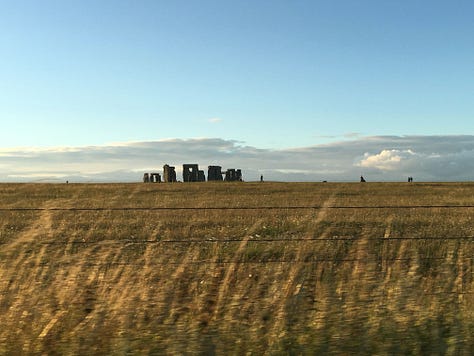
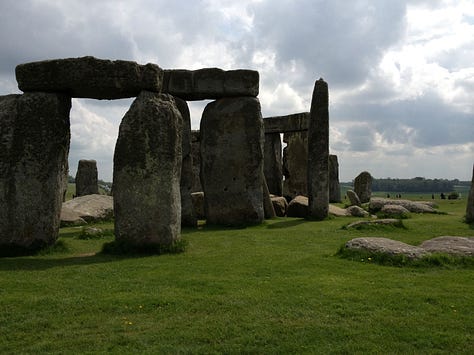
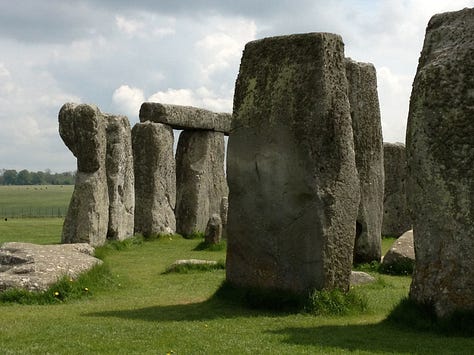
The other apparently impressive thing I saw just beyond Stonehenge was an enormous field of giant pigs and pig bunkers. At least that’s what I thought they were. I found this photo in my archives labelled: “First photo in England, driving to my new home.” No photos of Stonehenge, just pig fields. Nope, I have no idea why.
Not withstanding the previous discussion about pigs, at this point in the journey we were getting hungry, so Pete suggested we stop at a traditional ‘roadside services’. Before we go any further, let’s remember Pete had been living out of the UK for the last 10 years, so in that time many things had moved on here in the UK. Pete’s memory of these particular roadside eateries was actually from his childhood, not even from the ten years before he left the country. Lets just give him that. Anyway, we stoped at a place called The Little Chef2, a roadside diner popular in the 1970s.
I’d just arrived from California, land of the always available fresh fruit and vegetables, I don’t eat meat, and am just a tiny bit fussy about the freshness and quality of the food I eat. The only thing I saw on the menu of the words I understood that I could possibly eat was either an egg salad or a tuna mayo sandwich. Both included a lot of mayonnaise on a floury white bread, buttered. Gah. Most of the menu was fried, and/or meat based, and either buttered or mayonnaised. Not my style, really. Lesson One learned: Don’t ever stop there again. (Pete pointed out that we had very little choice, and he is right; over time we learned how to better navigate food options along this route. Also: This was probably the last Little Chef still in business in this region and within a few years, all the remaining Little Chef’s had transformed to Starbucks).
Eventually the hills got bigger, the road windier and we were in Devon, a very big rural county almost at the tip of South West England. Devon has a coast on both the north and South of it; we were headed for Plymouth at the southwestern tip of the county, on the edge of the Sea and Cornwall. The hills were furry green, dotted with sheep and cattle and rows of rapeseed. We passed a sign for the “Well-hung Meat Company”.
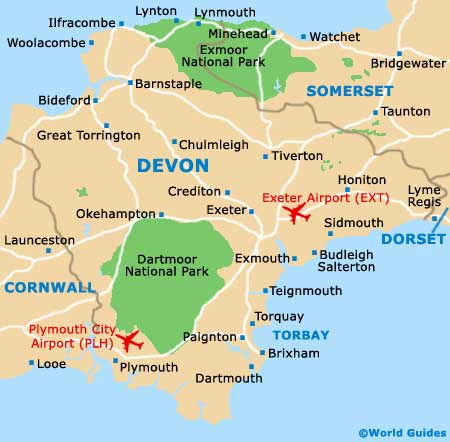
Eventually we drove into Plymouth, up a steep hill and turned onto a leafy street with grand three-story mansions on either side. Pete turned into one of the driveways and there was our new home: the top floor of one of these grand mansions. I had seen photos of the inside, and a few showing the view, but I was absolutely stunned once we got inside. This flat (1) was enormous (three bedrooms; two bathrooms, plus a large kitchen, grand living room and a massive central foyer/room), (2) despite being in the ‘attic’ it still had incredibly tall ceilings and huge windows so was filled with natural light, and (3) overlooked a sloping-away park that led to a sweeping view of the massive harbour that defines Plymouth. The sea was out our window, glittering in the hazy September sunshine. Home!

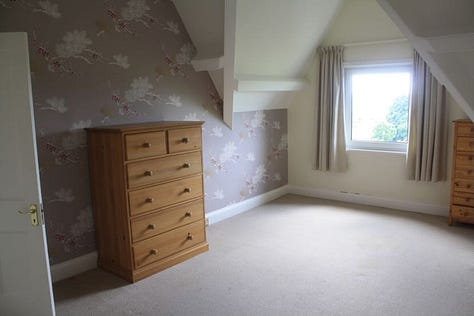

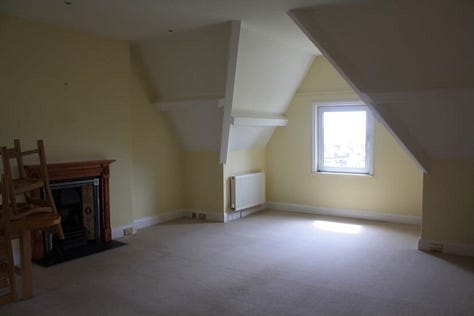
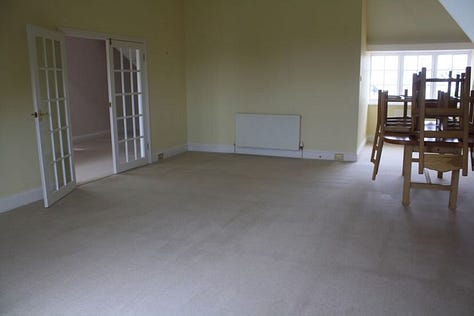

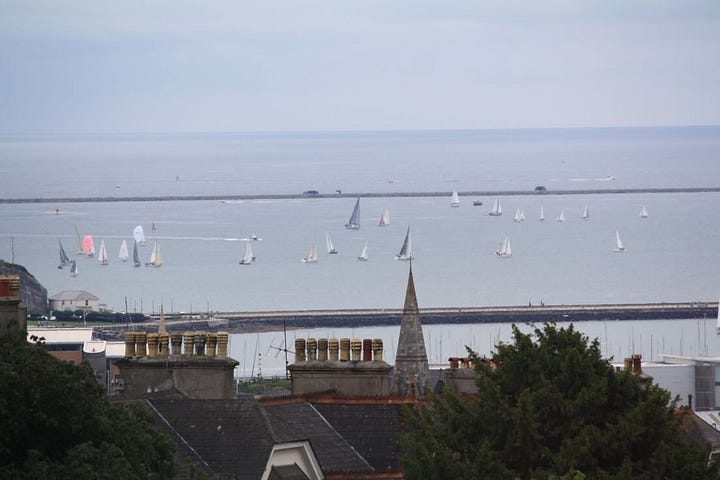
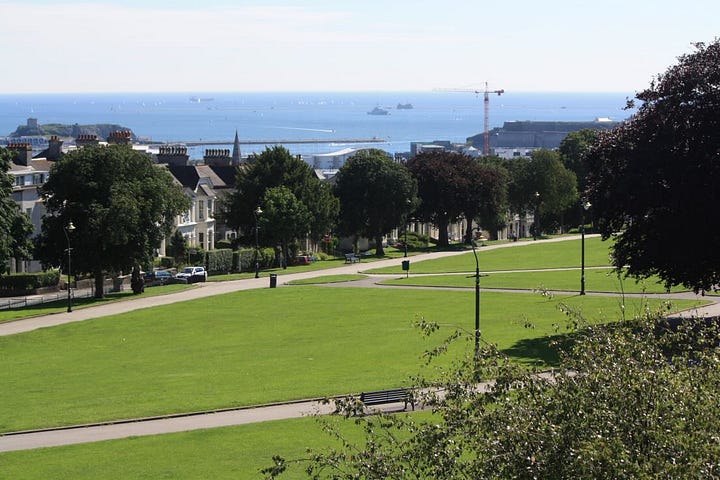
Orientation
The next few days and weeks were full of trying to work out how to live together in our new shared home. Pete had been there for almost a month before I arrived; once our belongings eventually arrived, Pete had set some things up the way that made sense to him, and left a lot for us to decide together.
Probably the trickiest room for us to decide how to organise was the office. It was the smallest room of the three bedrooms, had a pitched roof with odd angles, and a gorgeous view out one small window, directly opposite the doorway into the room. Pete had a large desk system with two worktops and returns, and a bookcase that sat on top of a two-drawer wide filing cabinet. He had set it up in the way that made sense to his working style, and the way he had previously used the desks. He had also put his workstation and monitor right in front of the window. My workstation was in the opposite corner facing the wall, You can probably guess I was not too happy about that.
I had to take a deep breath and figure out how to discuss this. Of course this wasn’t our only ‘point of discussion’ in organising our new home (and how to live our life together, generally.) After years living on our own, we were both used to doing things our own way and rather stubborn about it as well. Not surprisingly, we often agreed about what the outcome should be, it just took our egos a while to get there. It was exhausting. (I did finally make sure the office window was clear for both of us to see out, with neither of us sitting in front of it.)
At the same time, our days were mainly filled with new and exciting activities for both of us, and we were exhilarated to be on this wonderful adventure, the two of us together. Really, it was so much fun to embark on this new unfolding life, discovering each other again through our day-to-day activities. We were meeting new colleagues, learning to navigate our way around the campus and the City itself. When we weren’t doing our academic tasks, we explored the city and started learning where to find the day-to-day living items we needed, and for me, where to find the kinds of cafes and neighbourhoods that I might want to hang out in when not in class.
Disorientation
Exploring the city on foot by myself led to me getting lost constantly. I always have had a really good internal compass. When I go someplace new, I study a street map ahead of time, identify some landmarks to look out for, and then try to navigate without looking at the map again. (I wrote more about this in a previous post here.)
In part because it is old and not built on a grid like so many American cities, Plymouth befuddled me at every turn. Literally. I would start off on the right angle, turn onto the wrong street, and then fly off in the wrong direction. More often then not, I would overshoot the street I was meant to turn on, and then get hopelessly lost because I hadn’t looked that far out on the map. Also, the street names change from block to block, or the signs only show in certain places. I hadn’t yet learned to look on the sides of buildings and walls for the street names.
I also learnt that the distances in Plymouth, and in England in general, were smaller than those I was used to in California, so I expected everything to be father away than it actually was. Plus, I tend to walk fast, so once I head off I get pretty far before I realise admit I am in the wrong place. Sigh.
This was an oversized source of frustration and also the beginnings of persistent feelings of incompetence for me. I know how to navigate and get myself places, and yet here I was, getting lost almost every day.
And then there was the rain which showed up off and on every day or so. Intellectually I knew that it was going to rain more here. But surely not right away? And not when it was the end of summer? It was still warm out! This spoilt Californian was expecting rain to start in November sometime, after it got cold. That’s how rain is done: during the winter, and a little while into Spring, but then it is mostly finished until November again. MAYBE a short thunderstorm for a day in mid to late August. But this! This was a random downpour with the sun out! Then a little mizzle, next a wild wind, and then blazing hot sun. All in about the same amount of time it takes for me to type this.
This new life was full of ups and downs, or swings and roundabouts as they say here. I was very excited with the challenges of moving to a new country, and learning to navigate a relationship in a new way. But I was also surprised by the frustrations that came with having to learn so many unfamiliar things to accomplish the most basic tasks (like finding my way to the same bank two days in a row: nope, couldn’t do that). And I hadn’t even started my Master’s programme, when I would need to learn new ways to study and all the completely unexpected language challenges. Plus, it was the first time in my adult life I wasn’t earning my own money from work, and some of you may be able to imagine what kind of relationship challenges that brings.
Coming next week in Part Three: Becoming and also un-becoming
Thanks for reading this far! Let me know if you have anything in particular you want to hear about next week (or anytime!).
Meantime, I’d love to hear from. you how you have navigated moving to a new place, or moving in with someone new, and/or the joys and challenges of creating your new home, anytime.
Until next week,
xoxo Sabrina
Also, if you enjoyed this post, clicking the ❤️ above will help other readers find this Substack. Thank you!
https://www.visitsouthdevon.co.uk/blog/read/2016/08/love-like-a-local-driving-the-south-devon-lanes-b110
https://en.wikipedia.org/wiki/Little_Chef

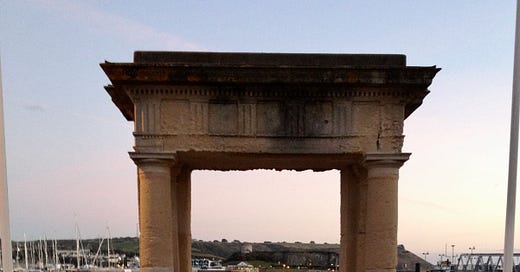



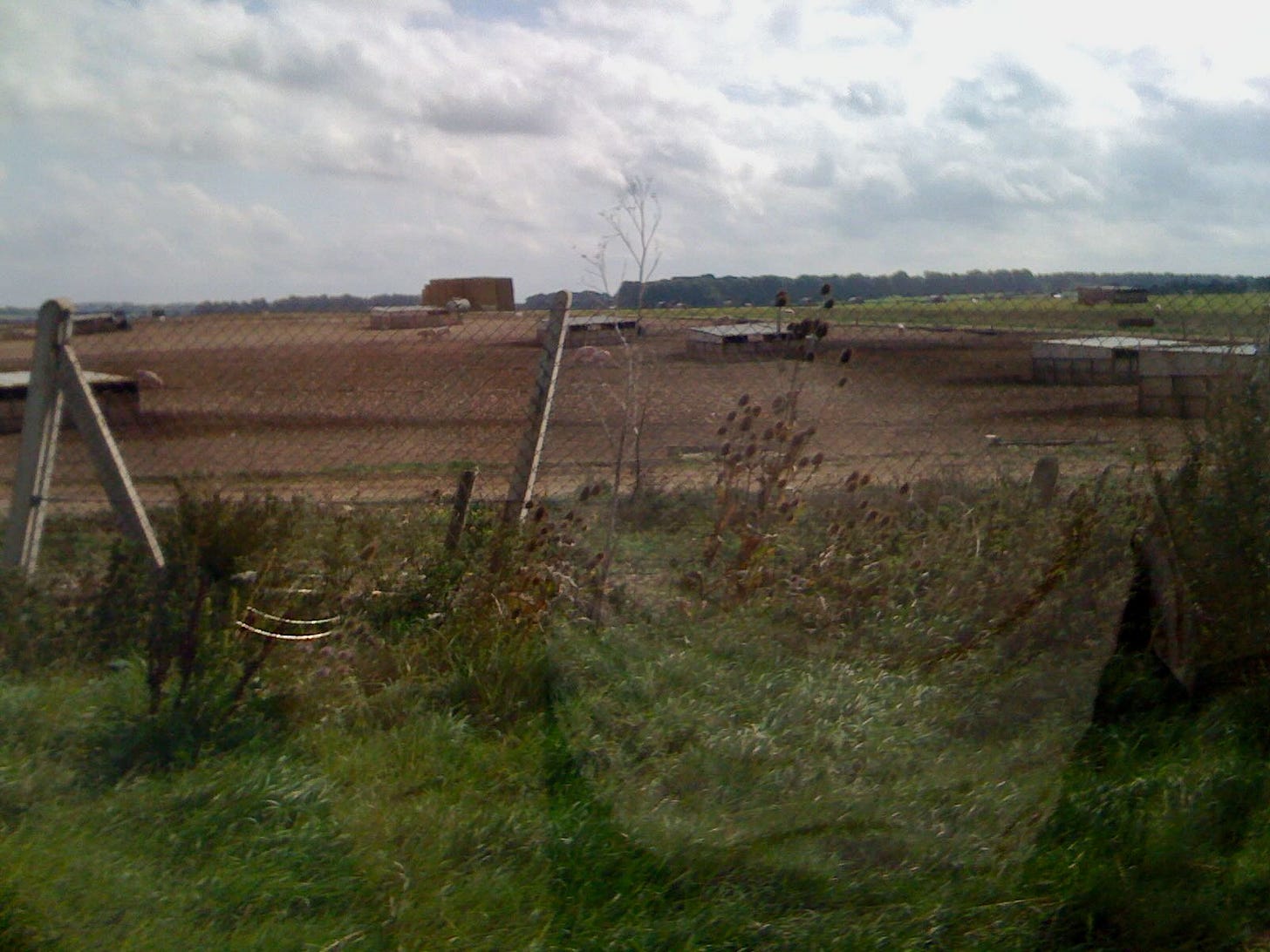

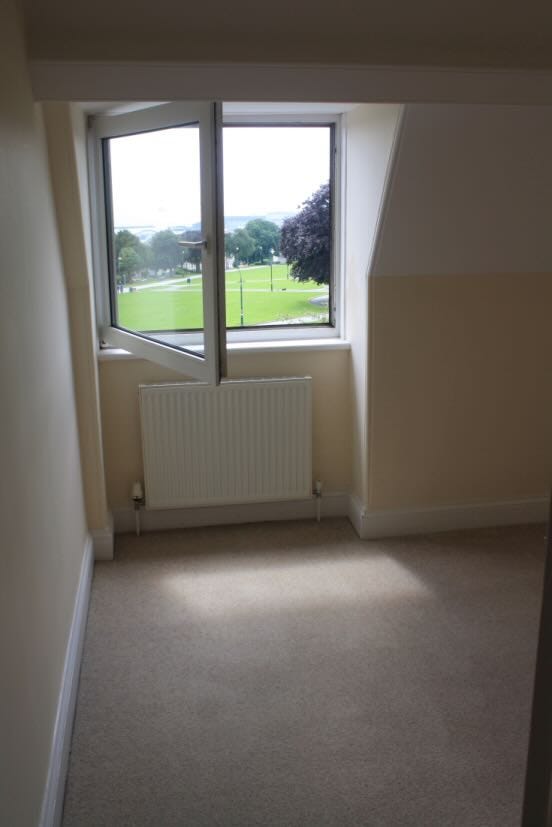
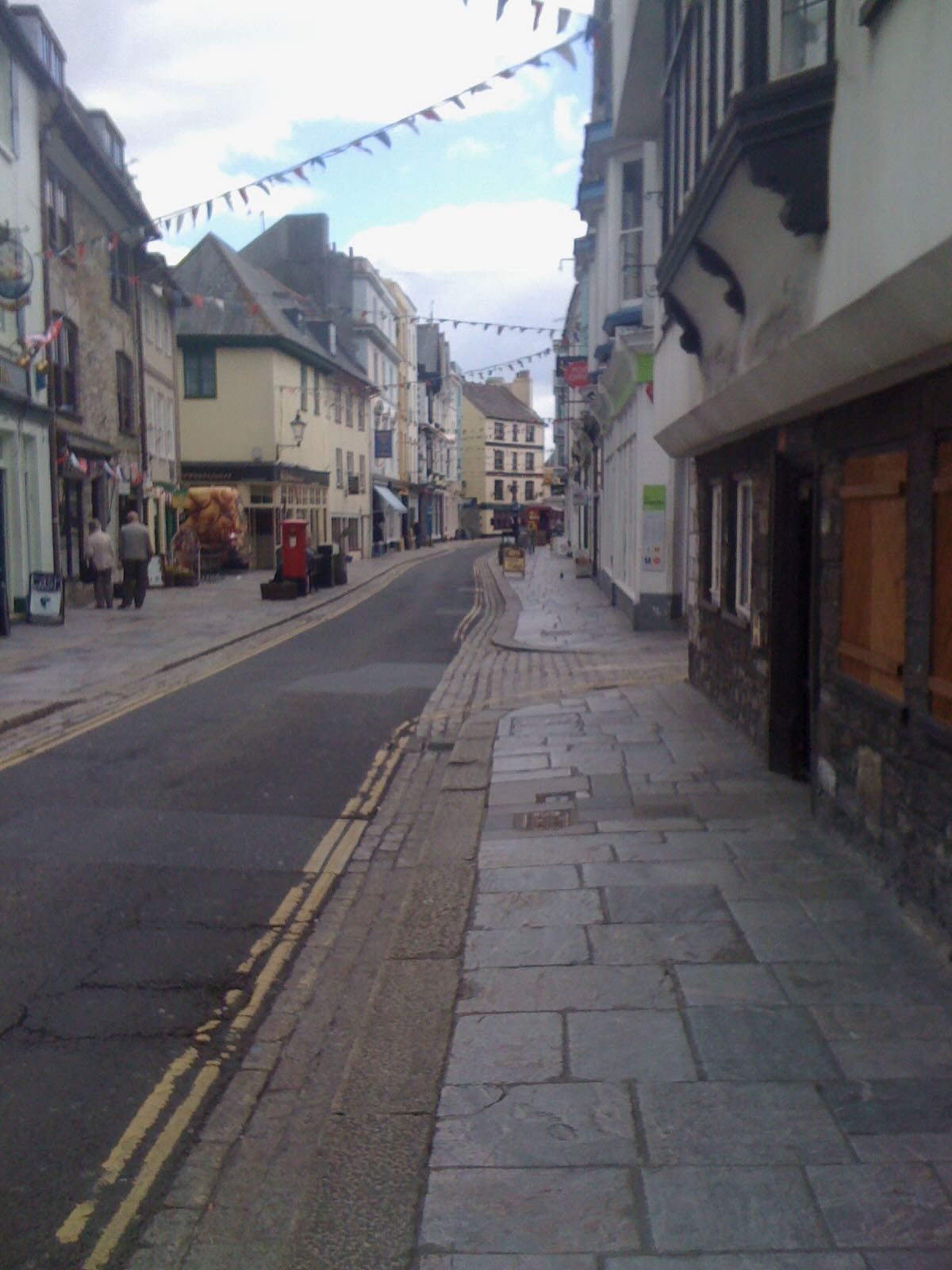
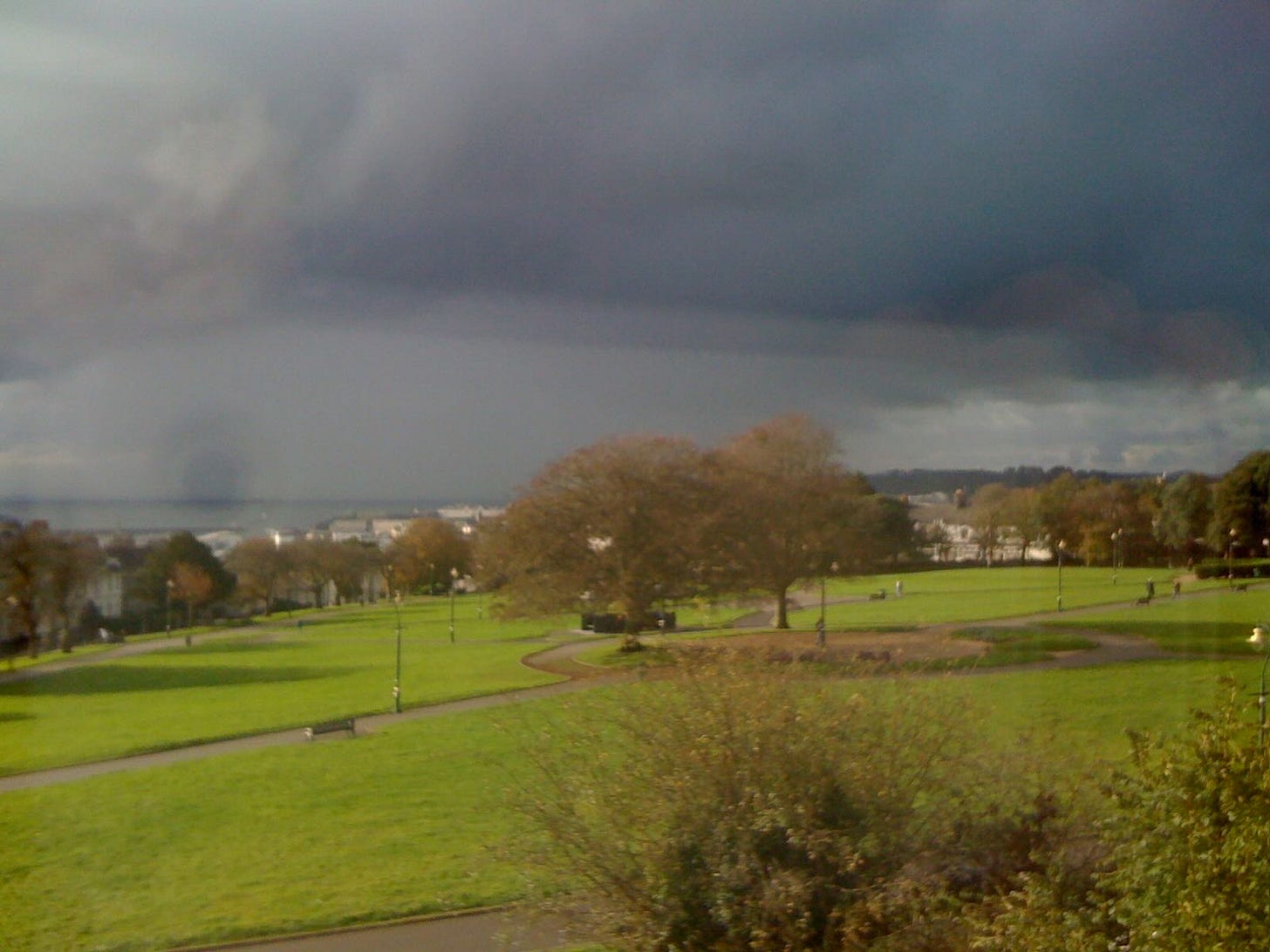
Ahhh, the A303 - always a nightmare! Well, it's pretty - but only if you can avoid the snarl-ups...! 🤣 Loved hearing your stories of getting lost - hard relate! And I too avoid the Little Chef - I'm allergic* to beige food......
*not allergic as such, just a carb-dodger.
Another terrific post, Sabrina - I'm really enjoying this series. More, please! 🙌
Another terrific post, Sabrina. Thank you. I love the voice, tone, humility, and a bit of self-deprecation. Being in your food group category, I wouldn't even have gotten to the tuna or egg salad because mayonnaise repulses me. Your post reminded me once again how important food is to make one feel good, happy, and comfortable.
In January, I remarked to Fabio that I was very proud of myself for managing remarkably well the first year of a living in a foreign country. I no longer panicked when someone spoke to me for fear of not understanding the Spanish accent and different vocabulary. Within in a certain walking range of our apartment, I rarely got lost, unlike when we moved here and I only risked walking in straight lines. I wasn't lonely, mostly due to my friends and our Zoom, FaceTime, and WhatsApp calls. I had made a few Spanish friends and I have a new American BF in Madrid. I knew which grocery store sold the beer, hummous, and yogurt we like which was different than the one where we buy chips, cheese, and oatmilk. So much orientation happened in a year that I didn't notice how far I'd come until I stopped myself to think about it. It was quite a feat.